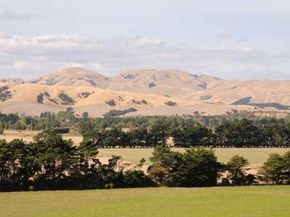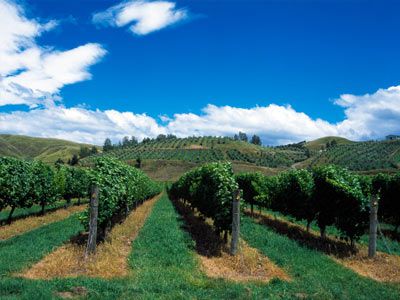In the young wine culture of New Zealand, the up-and-coming Wairarapa region is starting to capture a lot of attention. This rural, pastoral area near the southern tip of North Island has seen a steep increase in wine production over the previous 25 years. Because of its proximity to Wellington, people sometimes refer to Wairarapa as the "Wellington wine region." The valley is a little more than an hour's drive -- a scenic one that winds around Wellington Harbour over the Hutt Valley and Rimutaka Hills -- from the capital. Here a thriving tourist trade has grown up around the region's wine trails.
The largest town and commercial center in Wairarapa is Masterton, but the center of wine country is Martinborough, a small service town in which the streets trace the shape of the British flag, the Union Jack [source: Wines From Martinborough,]. The town was in declining straits until the 1980s, when scientists discovered the area's untapped viticultural potential. The wine industry swiftly took over Martinborough, and brought its economy back to life. Now dozens of wineries are located near the town center, and a plethora of cafes, restaurants, and bed and breakfasts cater to weekending Wellingtonians and other wine tourists. Gladstone, Masterton and East Taratahi are homes to additional wineries. Almost all the wineries of Wairarapa are small, boutique operations. Quite a few have developed excellent reputations and have won national awards.
Advertisement
While the first New Zealand wines to score on the global market were whites featuring Sauvignon Blanc, the Wairarapa region has raised the profile of Pinot Noir, a grape that is commonly considered to be a challenge to convert into fine quality wine [source: Dalley]. However, the area's amenable climate and soil also produce an array of vines such as Merlot, Chardonnay, Pinot Gris, Syrah, Riesling and Gewürztraminer. Let's explore the brief but interesting history of Wairarapa wine.
Advertisement

